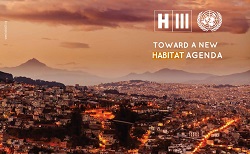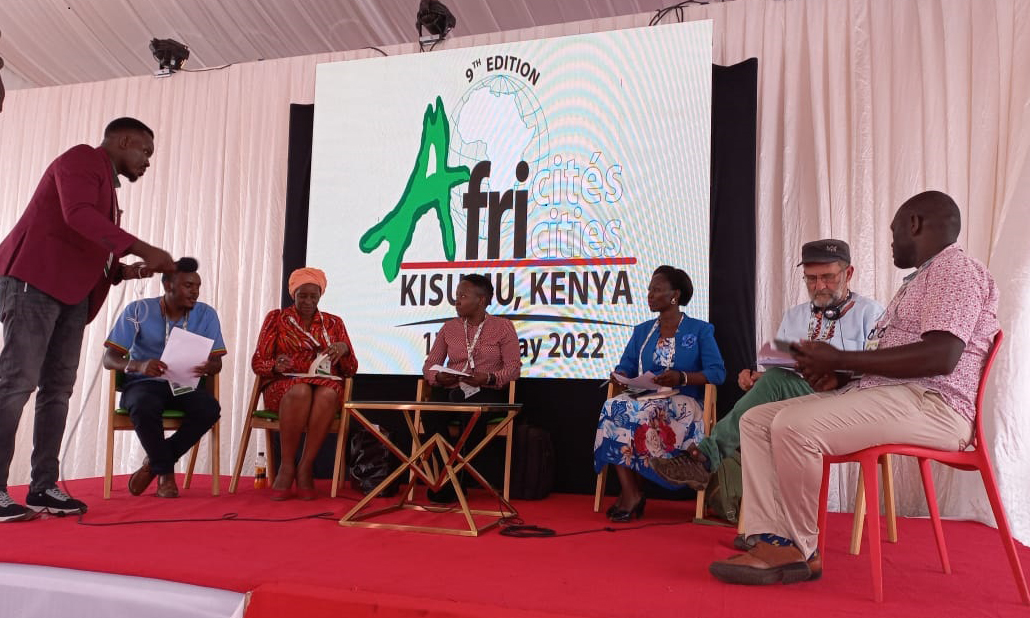
3 Habitat III is all over the city of Surabaya these days. Banners, signage and
media on many streets and their corners carry the message “Toward a New Urban
Agenda” and “H III” as Habitat III’s icon.
The city cleans up
its streets and spaces even further. Some lamp posts have been replaced,
decorative street lights are up.
Thousands of
delegations from UN member countries are gathering to comment on, discuss,
negotiate and make changes to the zero draft of the New Urban Agenda, which
will be finalized on Oct. 17 to 20 this year in Quito at Habitat III, the third
major bi-decennial global summit to set the policy agenda for the next 20
years.
Every Habitat
conference results in recommendations for housing and development policies and
actions by governments of UN member countries. What is different at this year’s
Habitat, though, is that the specific title of the conference diverges from the
United Nations Conference on Human Settlements (Habitat I and II) to the United
Nations Conference on Housing and Sustainable Urban Development.
The shift of
emphasis from “human settlements” to “housing and sustainable development” is
also reflected in the agenda that is produced from each conference.
Habitat II in Istanbul
in 1996 produced the Habitat Agenda that, according to the UN, acknowledged
human beings “are at the center of concerns for sustainable development,
including adequate shelter for all and sustainable human settlements, and they
are entitled to a healthy and productive life in harmony with nature.”
The extensive
document, which contained 241 paragraphs with more than 600 recommendations,
was criticized as early as one year after, by prominent development planning
professor David Satterthwaite, who highlighted a lack of assessment criteria.
This criticism has been echoed in 2016 by researchers at New York’s [The New
School] Habitat Commitment Project.
When the draft of
the New Urban Agenda was published in early May, critics, both scholars and
civil society activists, attacked the content for at least five reasons.
First,
implementation assessment remains a weakness, but the shift of emphasis from
human beings and harmony with nature to a vaguer “cities for all.”
Although the term
“people-centered” can be found many times in the document, the shift from
“settlement” to “urban” reflects the abandonment of “non-urban” areas.
Second, the zero
draft does not challenge the status quo in development processes. The document
only states that the world’s urban population will nearly double in 2050 and
therefore there will be challenges “in terms of housing, infrastructure, basic
services, food security, health, education, decent jobs and natural resources,
among others” (para. 2).
But rather than
identifying the problems of current urbanization trajectories, the document
takes it as a given fact and straight away pushes it into the need to readdress
how human settlements are “planned, financed, developed, governed and managed.”
The zero draft neither explores the possible ways to curb urbanization, nor
suggests the need for alternative development processes and programs.
Third, the zero
draft misses the elephant in the room that causes unequal developments, which
is the domination of the property market in urban development. In a gathering
in May, civil society groups in Indonesia identified that the zero draft failed
to focus on its vision of a people-centered city. It did not address either
current urban development trajectory, which tends to kill notions of urban citizenship
and responsibility, creativity and human dignity as the main components of the
city.
Fourth, the use of
the term “urban” in the title itself is already problematic because it
perpetuates the urban bias. President Joko “Jokowi” Widodo has often spoken of
the need tomembangun dari pinggiran,
or develop from the periphery. This term can also be translated as “develop
from the marginalized”, given that many areas have been neglected for decades.
Therefore, to be
consistent with this vision in Indonesia, it would have been ideal if Indonesia
had pushed for more attention to the urban-rural divide and interconnectedness
in the New Urban Agenda, or whatever title it had. In fact, one of the main
problems of contemporary cities is that the cities are disconnected from their
hinterlands, while at the same time they remain dependent on rural areas to
produce their needs.
Previous
discussions within the network of civil society groups in Surabaya resulted in
several recommendations in response to the zero draft. The response identified
the need to plan cities based on three basic needs: human settlement, justice
and social relations.
The domination of
the monetary system in every aspect of urban development erodes consciousness
as citizens, as it pushes away people-centeredness into financial-centeredness.
These are concepts that are not touched by the New Urban Agenda.
Furthermore, the
current New Urban Agenda draft shows that much of the “effective
implementation” of these policies is driven by infrastructure investment and
financing rather than the role of the people.
There are mentions
of a “participatory” approach, but the agenda does not sufficiently address how
this is approached, despite the fact that “participation” has many levels.
Why does the New
Urban Agenda matter? First, we need another agenda that focuses more on
empowerment of local societies and pushes for alternative development by and
for the people.
Second, there needs
to be more emphasis on the needs of cities—human settlement, justice and social
relations—to achieve more relevant cities for flourishing citizenship.
Third, although The
Habitat Agenda from the second conference has shown traces of these alternative
concepts, it lacked assessment and evaluation of the project, and this lack of assessment
criteria is also repeated in the zero draft.
The Habitat Agenda
from Habitat II, for example, was against forced evictions. But the current
zero draft of the New Urban Agenda does not mention them.
At the end of the
day, it is still doubtful that if the New Urban Agenda will be implemented on
the ground in each member country. Moreover, the Habitat Agenda from Habitat II
is still incompletely and unequally fulfilled.
Nevertheless, it is
still important to ensure that the commitments from Habitat II still apply in
the current Habitat III agenda.
It is also
important to establish assessment criteria on the next agenda from Habitat III,
along with stronger implementation commitments and consequences for breaching
them.
____________________________________
The writer is a
senior research fellow at the Asia Research Institute, National University of
Singapore.


